Blog & Latest Updates
Fly Fishing Articles
Insects by Common Name


> > The Bois Brule River
Landscape & scenery photos from the Bois Brule River

A small brown trout jumps at the end of my line. Photo by Sandy Neuswanger. Yes, the most popular photo on this website was taken by my mom when I handed off the camera to play this fish!
StateWisconsin
LocationBois Brule River
Date TakenJul 30, 2005
Date AddedFeb 8, 2006
AuthorTroutnut
CameraCanon EOS 20D

Fish don't get any better than this.
StateWisconsin
LocationBois Brule River
Date TakenJun 16, 2006
Date AddedJul 1, 2006
AuthorTroutnut
CameraPENTAX Optio WPi
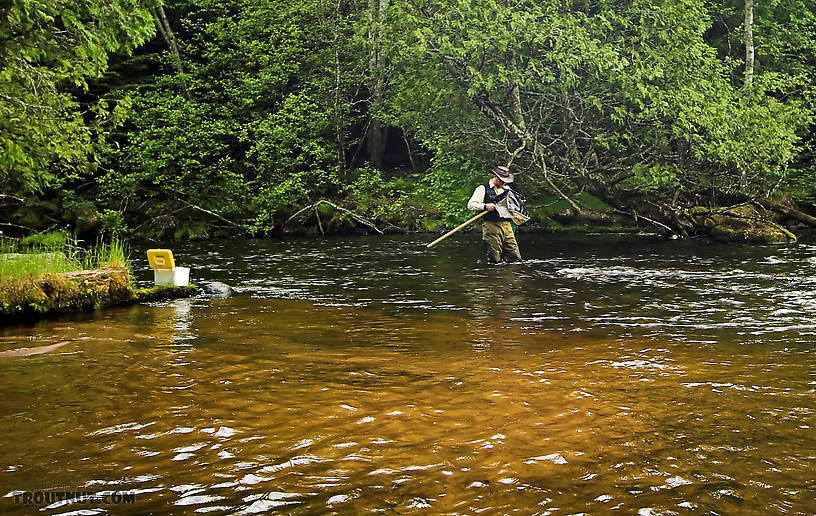
Here I'm looking through the sampling net for interesting nymphs, some of which ended up on this site.
StateWisconsin
LocationBois Brule River
Date TakenJun 9, 2005
Date AddedFeb 8, 2006
AuthorTroutnut
CameraCanon EOS 20D
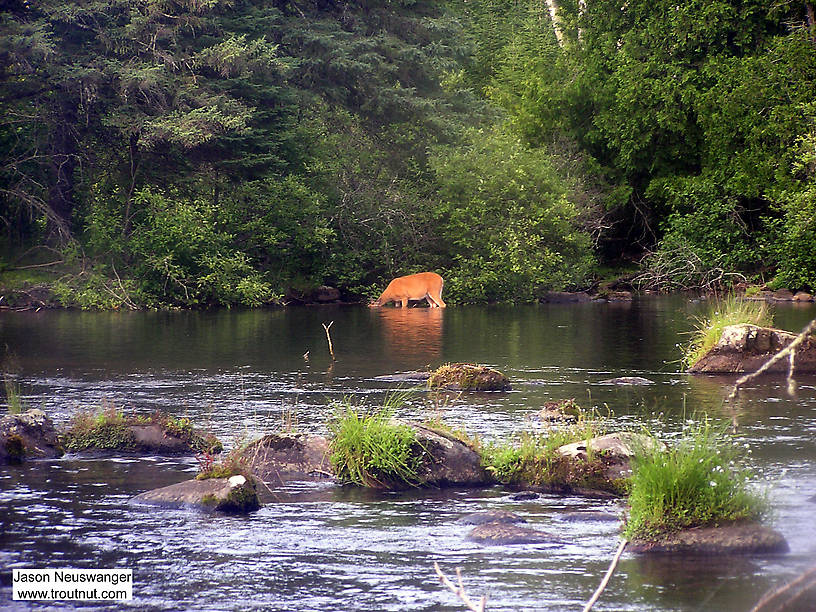
A whitetail deer pretends to be a moose, sticking its head underwater to graze on rich aquatic vegetation.
StateWisconsin
LocationBois Brule River
Date TakenJul 27, 2004
Date AddedJan 25, 2006
AuthorTroutnut
CameraOlympus C740UZ
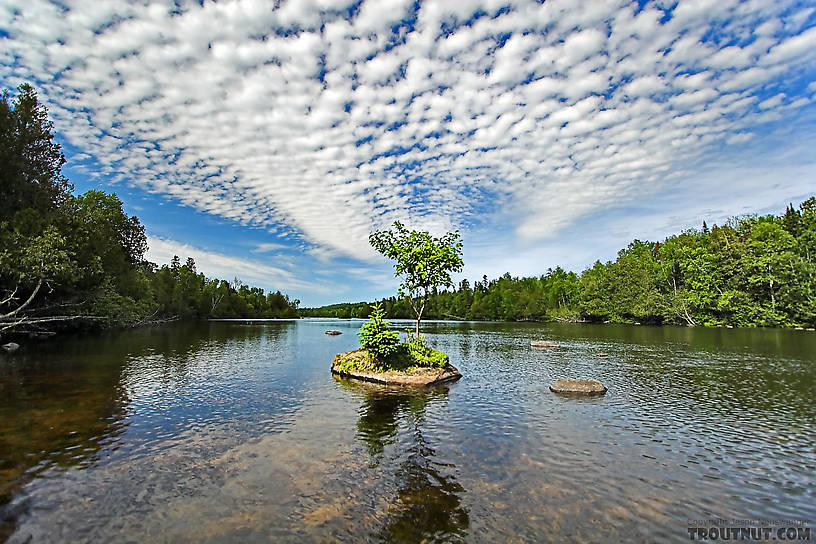
This looks like a normal lake at first, but it's actually a natural, shallow widening in the channel of a famous trout stream. On clear days canoeists drift through and watch small trout and suckers swim beneath them. Large brown trout lay hidden in the weeds, hard to catch during the day but a fun challenge for any angler willing to brave the mosquitoes.
StateWisconsin
LocationBois Brule River
Date TakenJun 9, 2005
Date AddedFeb 8, 2006
AuthorTroutnut
CameraCanon EOS 20D
Underwater photos from the Bois Brule River

StateWisconsin
LocationBois Brule River
Date TakenApr 13, 2004
Date AddedJan 25, 2006
AuthorTroutnut
CameraOlympus C740UZ

A water boatman and a scud are visible in this picture. Can you find them?
In this picture: True Bug Family Corixidae (Water Boatmen) and Arthropod Order Amphipoda (Scuds).
In this picture: True Bug Family Corixidae (Water Boatmen) and Arthropod Order Amphipoda (Scuds).
StateWisconsin
LocationBois Brule River
Date TakenApr 13, 2004
Date AddedJan 25, 2006
AuthorTroutnut
CameraOlympus C740UZ
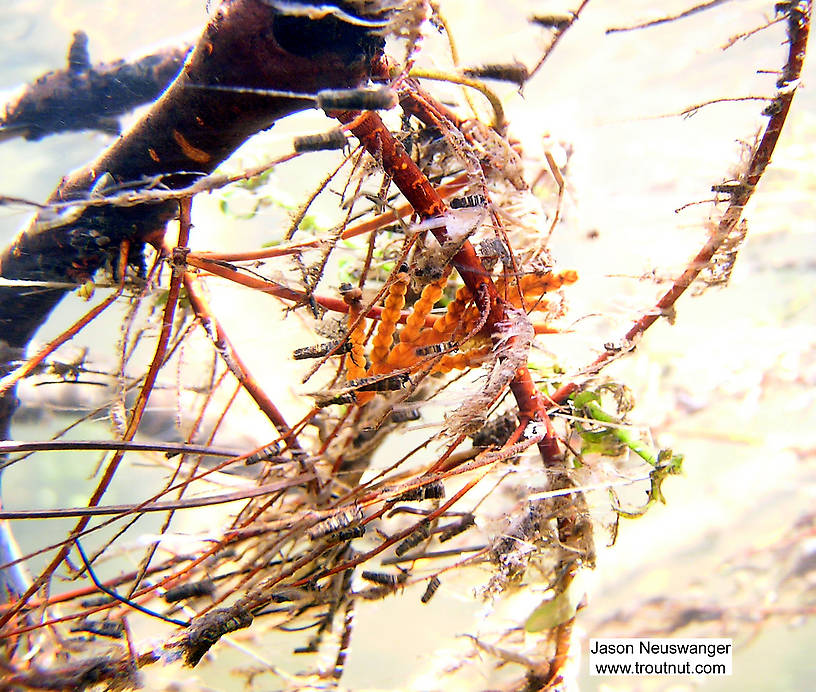
Several cased caddis larvae cling to the twigs of a fallen tree limb in a clear trout stream's strong current.
In this picture: Insect Order Trichoptera (Caddisflies).
In this picture: Insect Order Trichoptera (Caddisflies).
StateWisconsin
LocationBois Brule River
Date TakenApr 13, 2004
Date AddedJan 25, 2006
AuthorTroutnut
CameraOlympus C740UZ
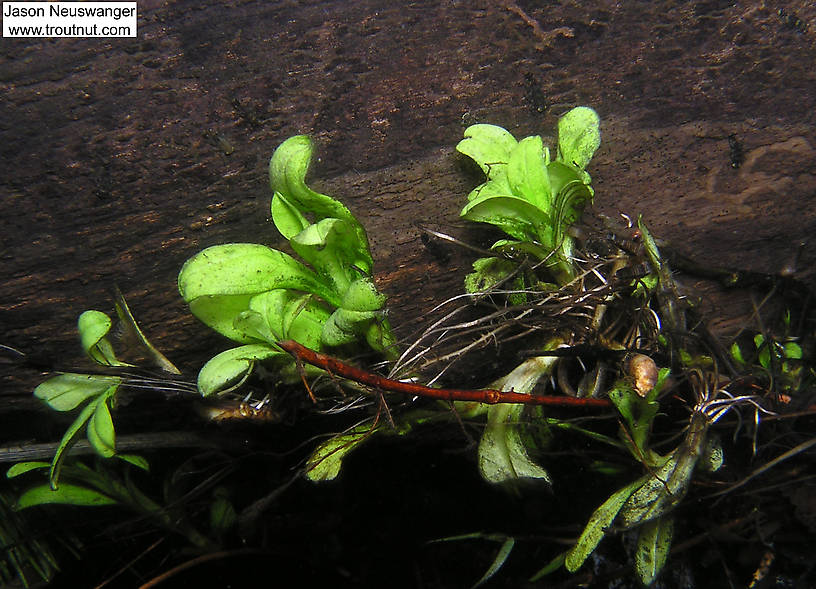
Several well-camouflaged Ephemerella mayfly nymphs cling to this log, and a few cased caddisfly larvae cling to the plant in front of it.
In this picture: Mayfly Genus Ephemerella (Hendricksons, Sulphurs, PMDs) and Insect Order Trichoptera (Caddisflies).
In this picture: Mayfly Genus Ephemerella (Hendricksons, Sulphurs, PMDs) and Insect Order Trichoptera (Caddisflies).
StateWisconsin
LocationBois Brule River
Date TakenApr 13, 2004
Date AddedJan 25, 2006
AuthorTroutnut
CameraOlympus C740UZ

In this picture: Mayfly Genus Ephemerella (Hendricksons, Sulphurs, PMDs) and Insect Order Trichoptera (Caddisflies).
StateWisconsin
LocationBois Brule River
Date TakenApr 13, 2004
Date AddedJan 25, 2006
AuthorTroutnut
CameraOlympus C740UZ
Closeup insects from the Bois Brule River
Male Baetidae (Blue-Winged Olives) Mayfly Nymph View 10 PicturesThis male nymph is probably in its final instar (Instar: Many invertebrates molt through dozens of progressively larger and better-developed stages as they grow. Each of these stages is known as an instar. Hard-bodied nymphs typically molt through more instars than soft-bodied larvae.). The wing pads (
View 10 PicturesThis male nymph is probably in its final instar (Instar: Many invertebrates molt through dozens of progressively larger and better-developed stages as they grow. Each of these stages is known as an instar. Hard-bodied nymphs typically molt through more instars than soft-bodied larvae.). The wing pads ( Wing pad: A protrusion from the thorax of an insect nymph which holds the developing wings. Black wing pads usually indicate that the nymph is nearly ready to emerge into an adult.) are extremely black and the large turbinate (
Wing pad: A protrusion from the thorax of an insect nymph which holds the developing wings. Black wing pads usually indicate that the nymph is nearly ready to emerge into an adult.) are extremely black and the large turbinate (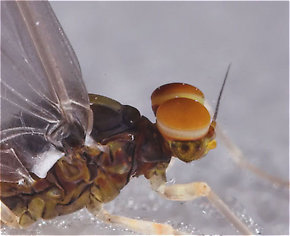 Turbinate: Shaped like a top or elevated on a stalk; usually refers to the eyes of some adult male Baetidae mayflies which are wider near the tip than at the base.) eyes are very apparent inside the nymph's head.
Turbinate: Shaped like a top or elevated on a stalk; usually refers to the eyes of some adult male Baetidae mayflies which are wider near the tip than at the base.) eyes are very apparent inside the nymph's head.
 View 10 PicturesThis male nymph is probably in its final instar (Instar: Many invertebrates molt through dozens of progressively larger and better-developed stages as they grow. Each of these stages is known as an instar. Hard-bodied nymphs typically molt through more instars than soft-bodied larvae.). The wing pads (
View 10 PicturesThis male nymph is probably in its final instar (Instar: Many invertebrates molt through dozens of progressively larger and better-developed stages as they grow. Each of these stages is known as an instar. Hard-bodied nymphs typically molt through more instars than soft-bodied larvae.). The wing pads (
The wing pads on this final instar Baetidae mayfly nymph are extremely dark.

This male Baetidae dun has slightly turbinate eyes.
Collected June 9, 2005 from the Bois Brule River in Wisconsin
Added to Troutnut.com by Troutnut on May 26, 2006
Added to Troutnut.com by Troutnut on May 26, 2006
Female Ephemerella excrucians (Pale Morning Dun) Mayfly Spinner View 11 Pictures
View 11 Pictures
 View 11 Pictures
View 11 PicturesCollected July 1, 2005 from the Bois Brule River in Wisconsin
Added to Troutnut.com by Troutnut on April 22, 2006
Added to Troutnut.com by Troutnut on April 22, 2006
Female Baetisca laurentina (Armored Mayfly) Mayfly Spinner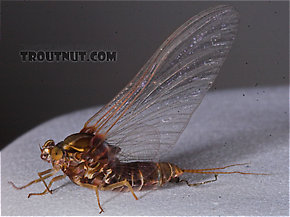 View 9 Pictures
View 9 Pictures
 View 9 Pictures
View 9 PicturesCollected June 1, 2005 from the Bois Brule River in Wisconsin
Added to Troutnut.com by Troutnut on May 24, 2006
Added to Troutnut.com by Troutnut on May 24, 2006
Leptophlebia (Black Quills and Blue Quills) Mayfly Nymph View 5 PicturesI think this one might be Leptophlebia intermedia.
View 5 PicturesI think this one might be Leptophlebia intermedia.
 View 5 PicturesI think this one might be Leptophlebia intermedia.
View 5 PicturesI think this one might be Leptophlebia intermedia.Collected February 5, 2004 from the Bois Brule River in Wisconsin
Added to Troutnut.com by Troutnut on January 25, 2006
Added to Troutnut.com by Troutnut on January 25, 2006
Teloganopsis deficiens (Little Black Quill) Mayfly Nymph View 6 PicturesThis nymph has tiny, barely detectable tubercles (
View 6 PicturesThis nymph has tiny, barely detectable tubercles ( Tubercle: Various peculiar little bumps or projections on an insect. Their character is important for the identification of many kinds of insects, such as the nymphs of Ephemerellidae mayflies.) on its abdominal segments, and I could not find the maxillary palpi. I have tentatively guessed that it is Serratella deficiens.
Tubercle: Various peculiar little bumps or projections on an insect. Their character is important for the identification of many kinds of insects, such as the nymphs of Ephemerellidae mayflies.) on its abdominal segments, and I could not find the maxillary palpi. I have tentatively guessed that it is Serratella deficiens.
 View 6 PicturesThis nymph has tiny, barely detectable tubercles (
View 6 PicturesThis nymph has tiny, barely detectable tubercles (
A few (not all) of the abdominal tubercles on this Ephemerella needhami nymph are circled. They are especially large in this species.
Collected June 9, 2005 from the Bois Brule River in Wisconsin
Added to Troutnut.com by Troutnut on May 26, 2006
Added to Troutnut.com by Troutnut on May 26, 2006
Recent Discussions of the Bois Brule River
first time visitors. staying in Brule. 1 Reply »
My wife and I will be visiting Brule in Mid-July, staying for several days. Any advice on fly fishing spots on the Brule River would be appreciated
ReplyStart a Discussion of the Bois Brule River:
Top 10 Fly Hatches
Top Gift Shop Designs
Eat mayflies.
Top Insect Specimens
Miscellaneous Sites
Troutnut.com is copyright © 2004-2024 Jason
Neuswanger (email Jason). See my FAQ for information about use of my images.
 privacy policy
privacy policy
